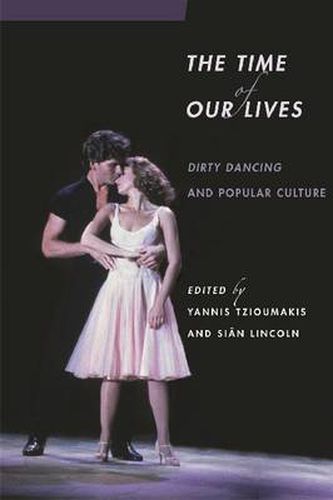Readings Newsletter
Become a Readings Member to make your shopping experience even easier.
Sign in or sign up for free!
You’re not far away from qualifying for FREE standard shipping within Australia
You’ve qualified for FREE standard shipping within Australia
The cart is loading…






This title is printed to order. This book may have been self-published. If so, we cannot guarantee the quality of the content. In the main most books will have gone through the editing process however some may not. We therefore suggest that you be aware of this before ordering this book. If in doubt check either the author or publisher’s details as we are unable to accept any returns unless they are faulty. Please contact us if you have any questions.
A low-budget independent film made by a now defunct video company in the late 1980s, Dirty Dancing became a sleeper hit with a huge, primarily young audience. Even twenty-five years on, the film has found millions of devoted fans around the world through TV, video, and DVD releases. In The Time of Our Lives:
Dirty Dancing
and Popular Culture editors Yannis Tzioumakis and Sian Lincoln bring together leading scholars of film, media, music, culture, theatre, dance and sociology to examine for the first time the global cultural phenomenon of Dirty Dancing. Tzioumakis and Lincoln begin by assessing Dirty Dancing’s cultural impact in the decades since its release and introduce contributors in four sections. Essays in
Dirty Dancing in Context
look at the film from several perspectives, including its production and distribution history, its blending of genres, its treatment of race, and its place in the political and visual culture of the 1980s. In
Questions of Reception,
contributors examine the many ways that the film has been received since its release, while those in
The Production of Nostalgia
focus on the film’s often critiqued production of an idealised past. Finally, contributors in
Beyond the Film
examine the celebrated synergies that the film achieved in the
high concept
film environment of the 1980s, and the final two essays deal with the successful adaptation of the film for the stage. With the enormous cultural impact it has made over the years, Dirty Dancing offers many opportunities for thought-provoking analysis. Fans of the movie and students and scholars of cultural, performance and film history will appreciate the insight in The Time of Our Lives.
$9.00 standard shipping within Australia
FREE standard shipping within Australia for orders over $100.00
Express & International shipping calculated at checkout
This title is printed to order. This book may have been self-published. If so, we cannot guarantee the quality of the content. In the main most books will have gone through the editing process however some may not. We therefore suggest that you be aware of this before ordering this book. If in doubt check either the author or publisher’s details as we are unable to accept any returns unless they are faulty. Please contact us if you have any questions.
A low-budget independent film made by a now defunct video company in the late 1980s, Dirty Dancing became a sleeper hit with a huge, primarily young audience. Even twenty-five years on, the film has found millions of devoted fans around the world through TV, video, and DVD releases. In The Time of Our Lives:
Dirty Dancing
and Popular Culture editors Yannis Tzioumakis and Sian Lincoln bring together leading scholars of film, media, music, culture, theatre, dance and sociology to examine for the first time the global cultural phenomenon of Dirty Dancing. Tzioumakis and Lincoln begin by assessing Dirty Dancing’s cultural impact in the decades since its release and introduce contributors in four sections. Essays in
Dirty Dancing in Context
look at the film from several perspectives, including its production and distribution history, its blending of genres, its treatment of race, and its place in the political and visual culture of the 1980s. In
Questions of Reception,
contributors examine the many ways that the film has been received since its release, while those in
The Production of Nostalgia
focus on the film’s often critiqued production of an idealised past. Finally, contributors in
Beyond the Film
examine the celebrated synergies that the film achieved in the
high concept
film environment of the 1980s, and the final two essays deal with the successful adaptation of the film for the stage. With the enormous cultural impact it has made over the years, Dirty Dancing offers many opportunities for thought-provoking analysis. Fans of the movie and students and scholars of cultural, performance and film history will appreciate the insight in The Time of Our Lives.